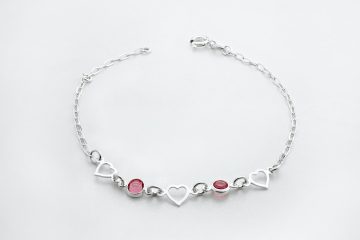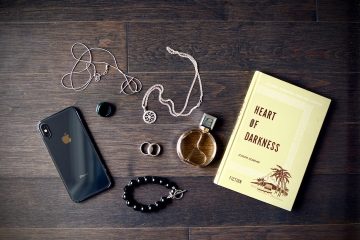Fashion trends are constantly evolving, breaking barriers, and challenging societal norms. One such trend that has gained significant popularity in recent years is men wearing bracelets. Traditionally associated with women, bracelets are now breaking gender stereotypes and becoming an essential accessory for men as well. In this article, we will delve into the world of men’s bracelets, exploring their history, cultural significance, and the reasons why they have become such a fashion statement for guys today.
1. The History of Men’s Bracelets
Bracelets have been around for centuries, transcending various cultures and civilizations. In ancient times, men from different civilizations such as the Egyptians, Greeks, and Romans adorned themselves with bracelets made from materials like leather, bone, or precious metals. These bracelets often symbolized power, wealth, and social status.
Over time, the popularity of bracelets among men waned, and they became primarily associated with femininity. However, fashion trends always find a way to revive themselves, and in recent years, men’s bracelets have made a strong comeback, reclaiming their place in the world of fashion.
2. Cultural Significance of Men’s Bracelets
Bracelets hold cultural significance in different parts of the world. In some cultures, bracelets are worn as a symbol of protection or good luck. For example, in ancient Greece, soldiers would wear leather bracelets for protection during battles. In India, men wear thread bracelets called “rakhi” to symbolize the bond between brothers and sisters during a festival called Raksha Bandhan.
Cultural significance also extends to religious practices. In Buddhism, bracelets made from beads or wood are worn as a reminder of mindfulness and meditation. In Christianity, bracelets with religious symbols like crosses are worn as a symbol of faith.
3. The Rise of Men’s Bracelets in Modern Fashion
In recent years, the fashion industry has seen a surge in the popularity of men’s bracelets. This shift can be attributed to several factors. Firstly, society’s perception of masculinity has evolved, allowing men to embrace their personal style without the fear of judgment. Men are now more open to experimenting with fashion and expressing their individuality through accessories like bracelets.
Secondly, the rise of social media and influencers has played a significant role in popularizing men’s bracelets. With platforms like Instagram and Pinterest showcasing diverse styles and trends, men have been inspired to incorporate bracelets into their outfits. Celebrities and fashion icons have also played their part by donning bracelets, making them more accessible and acceptable for the general public.
4. Versatility and Variety of Men’s Bracelets
One of the reasons why bracelets have become a staple accessory for men is their versatility and variety. There is a wide range of bracelet styles available, catering to different tastes and preferences. From simple leather or bead bracelets to more elaborate metal or chain designs, men can find a bracelet that suits their personal style and complements their outfit.
Bracelets can be worn alone as a statement piece or layered with other accessories for a more intricate look. They can be dressed up or down, making them suitable for various occasions, whether it be a casual outing or a formal event. The ability to mix and match different bracelets allows men to create unique combinations that reflect their personality and sense of style.
5. Expressing Personal Style and Individuality
Fashion is a form of self-expression, and men’s bracelets provide an avenue for individuals to showcase their personal style and individuality. By wearing bracelets, men can add a touch of flair and personality to their overall look. Whether it’s a rugged leather bracelet for a more edgy vibe or a sleek metal bracelet for a sophisticated touch, men can curate their own fashion statement through the selection of bracelets.
Furthermore, bracelets can serve as conversation starters and icebreakers. They provide an opportunity for men to express their interests or passions through symbolic charms or unique designs. For example, a bracelet with a travel-themed charm can indicate a love for exploration, while a bracelet with a musical note charm can showcase a passion for music.
6. Breaking Gender Stereotypes
The rise of men’s bracelets is not just about fashion; it also represents a movement towards breaking gender stereotypes. In the past, accessories such as bracelets were often associated with femininity, limiting men’s fashion choices. However, as society becomes more inclusive and accepting, men are embracing their right to express themselves through fashion, regardless of gender norms.
Wearing bracelets allows men to challenge societal expectations and redefine masculinity on their own terms. It sends a powerful message that fashion knows no boundaries and that everyone has the freedom to explore and experiment with their style.
7. Tips for Wearing Bracelets
While there are no hard and fast rules when it comes to wearing bracelets, here are a few tips to consider:
a. Size Matters:
Ensure that the bracelet fits comfortably on your wrist. It should be snug enough to stay in place but not too tight that it restricts movement.
b. Consider Your Outfit:
Choose a bracelet that complements your outfit and overall style. For a casual look, leather or beaded bracelets work well, while metal bracelets can add a touch of sophistication to a formal attire.
c. Mix and Match:
Don’t be afraid to mix and match different bracelets to create a unique look. Experiment with materials, colors, and textures to find combinations that suit your personal style.
d. Balance is Key:
If you choose to wear multiple bracelets, ensure there is a balance in terms of size and style. Avoid overcrowding your wrist with too many accessories.
e. Confidence is Key:
Ultimately, the most important tip is to wear your bracelets with confidence. Embrace your unique style and rock your bracelets with pride.
8. Conclusion
The fashion trend of men wearing bracelets has undoubtedly gained momentum in recent years. From its historical significance to its cultural symbolism, bracelets have evolved to become a powerful accessory that allows men to express their personal style and break free from societal stereotypes. With a wide variety of styles available and the freedom to mix and match, men now have the opportunity to curate their own fashion statement. So, if you’ve been contemplating whether bracelets are for guys, the answer is a resounding yes!
FAQs
1. Can men wear bracelets in a professional setting?
Absolutely! Men can wear bracelets in a professional setting, but it’s important to choose subtle and minimalistic designs. Opt for metal or leather bracelets that are sleek and understated, avoiding anything overly flashy or distracting.
2. Are there any cultural considerations when wearing bracelets as a man?
It’s always important to be respectful of different cultures when it comes to fashion choices. Some cultures may have specific meanings or traditions associated with bracelets, so it’s advisable to research and understand the cultural significance before wearing them.
3. Can men wear bracelets on both wrists?
While there are no hard rules, it’s generally advisable to stick to one wrist when wearing bracelets. Wearing them on both wrists can sometimes appear excessive or overpowering.
4. Are there any specific materials that are popular for men’s bracelets?
Popular materials for men’s bracelets include leather, metal (such as stainless steel or silver), beads (wooden or stone), and even fabric. The choice of material depends on personal style and preference.
5. How can I clean and maintain my bracelets?
The cleaning method for bracelets depends on the material. For metal bracelets, a soft cloth and mild soap can be used. Leather bracelets can be wiped with a damp cloth and conditioned occasionally. Beaded bracelets can be gently wiped with a soft cloth. Always refer to the manufacturer’s instructions for specific care guidelines.




